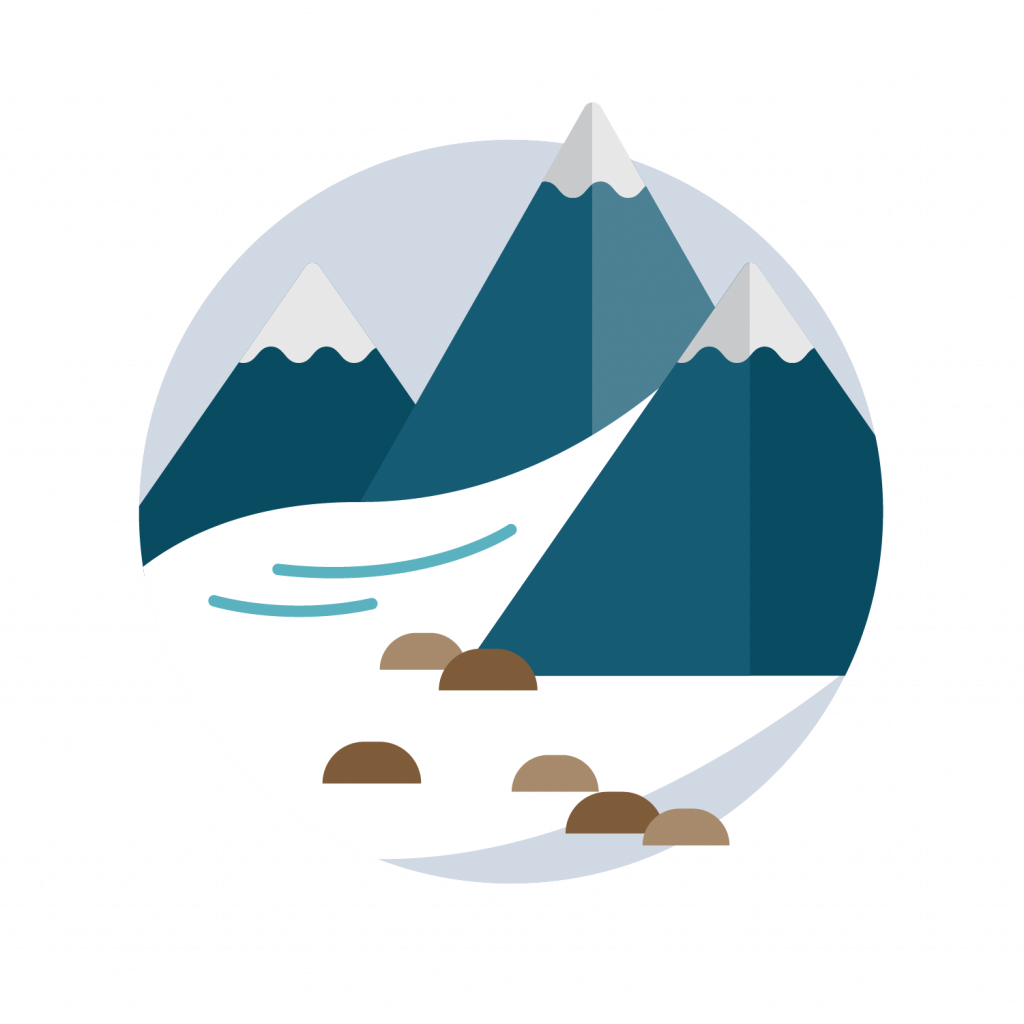Follow the Drop – Glacier

Glacier
Glaciers form when snow remains in the same area year-round, and over time new layers of snow bury and compress the previous layers, forming ice1. Your decision to become part of a glacier in the majestic Rocky Mountains, however, may be slightly different than you anticipated. Although deep parts of the glacier may remain as ice for several hundred years2, glaciers also melt in the summer. You’ll be moving again before you know it!
After joining the glacier, your water quality will also change slightly from when you fell as a flake of pristine snow. As the glacier slowly melts, the resulting running water will pick up sediment created when the glacier crushes rock crushes rock. Despite this change in water quality, the cold melting water from mountain glaciers is important for streams and fish, and for the Bow River in the later summer when river levels are generally low due to decreased rain and snowmelt3.
Definition
Sediment: A soft substance that is like a wet powder and consists of very small pieces of a solid material that have fallen to the bottom of a liquid.
Fun Fact
Crushes rock: The amazing blue colour of most glacial lakes in the Rocky Mountains is caused by the fine sediment created when glaciers crush rocks. The sediment suspended in the lake reflects sunlight and causes the lakes to have their unusual colour4.

Where next?
As late summer approaches and the glacier you are part of begins to melt, you have to make your next decision. You are leaving the glacier as part of the running water – but will you seep into the ground to become groundwater, or will you contribute to the glacial streams of the upper portion of the Bow River?
References and Further Reading
- National Snow and Ice Data Center. (2020). How are glaciers formed? | National Snow and Ice Data Center. Retrieved May 20, 2020, from https://nsidc.org/cryosphere/glaciers/questions/formed.html
- Science Learning Hub. (2009). Storage in the water cycle. Retrieved May 20, 2020, from https://www.sciencelearn.org.nz/resources/722-storage-in-the-water-cycle
- Alberta WaterPortal. (2012). Alberta Glacier Inventory and Ice Volume Estimation. Retrieved May 20, 2020, from https://albertawater.com/glaciers-overview
- Martha, G. (2016). Why are Lakes and Rivers in the Canadian Rocky Mountains so Brilliantly Turquoise Blue? Retrieved May 20, 2020, from http://sciexplorer.blogspot.com/2016/01/why-are-lakes-and-rivers-in-canadian.html
